Rectocele/Enterocele Repair (Rectal Repair)
When the bulge into the vagina comes from the rectum it is called a rectocele or rectal prolapse. As with other forms of pelvic organ prolapse (cystoceles, enteroceles, vaginal prolapse) childbirth, chronic cough, chronic constipation, and obesity are predisposing factors. Symptoms are similar to cystoceles such as pelvic pressure, an unsightly bulge in the vagina, and constipation. Furthermore, the need of reaching into the vagina to push stool out is not uncommon.
A bulge into the vagina can also be caused by small bowel pushing the vaginal tissues. This is called an enterocele. It can occur at the same time as a cystocele and a rectocele. In fact, we often cannot tell what is causing the bulge in the vagina whether it is bladder, rectum, or bowel, or all! Modern repair uses mesh or donor tissue with excellent success found. This repair is technically quite challenging and few are trained in the modern repair of this problem. Surgical repair consists of using sutures to bunch up the bulging tissues together. More modern repair consists of the use of mesh or donor tissues. This newer method gives success rates of over 95% in our hands. Rectocele Repair is done in the surgery center or operating room under general, regional, or local anesthesia. The procedure takes 60 minutes to perform. Most insurance companies cover this procedure.
Patient 1
History:
After several natural childbirths, a woman in her mid-40s had a vaginal bulge and feeling of rectal pressure. She felt chronic constipation although her stools were softening and well formed. She underwent a rectocele repair with vaginoplasty surgery to achieve a vaginal diameter of her pre-pregnancy years.
Patient 2
History:
The patient completed her childbearing and found that she felt a great deal of pelvic pressure and fullness with a build coming out of her vagina. She also had leakage of urine every time she laughed, coughed, exercised. She lacked friction during sex and complained of vaginal looseness. Her uterus was falling down right at the opening of her vagina and she felt a hard lump that her partner could also feel. Examination revealed a prolapsed uterus, a moderate fallen bladder, a severe fallen rectum that held stool right behind her perineum, and lack of support for her urethra that resulted in stress incontinence. She underwent a transobturator sling for her leaky bladder, anterior repair of her bladder, a rectocele and perineocele repair, and a Transvaginal Uterine Suspension developed by Dr. Alinsod. She also had a vaginoplasty to eliminate the vaginal looseness and a Perineoplasty that improved the physical appearance and bowel functions.
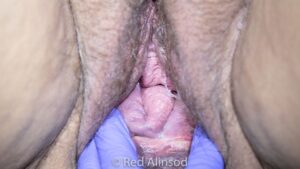
This is the view of the vaginal canal when the patient initially presented. There were bulges from all sides and a gaping opening and a very lax vaginal canal.
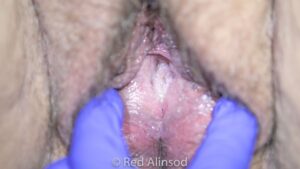
This is the view of the vaginal canal 6 weeks after her surgical repair. The gaping and bulging have been eliminated and her vaginal diameter is back to normal.
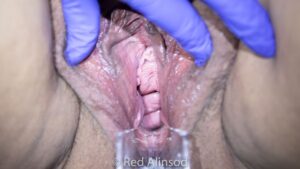
Before surgery you can see the urethra and bladder bulge up on top of the opening with the cervix right behind it.
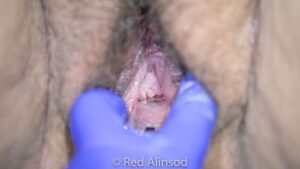
After Surgery the urethral and bladder bulge are gone and the cervix is no longer visible as it is suspended into its normal location deep in the vagina.
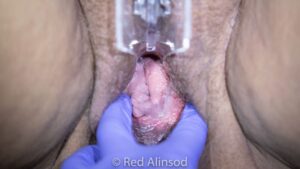
Before surgery you can see the rectum pushing into the vagina and the gaping opening and very loose vaginal walls.
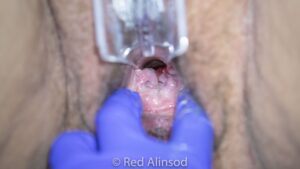
After surgery you can see a narrowed and normal vaginal canal with no bulges. The vaginal tissues are moist with its normal folds.
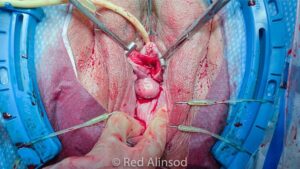
The round bump in the middle is the prolapsing cervix and uterus. Shown in blue with yellow grasping hooks is the Lone Star APS Vaginal Rectractor developed by Dr. Alinsod and brought to market in 2007.
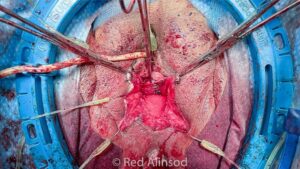
The large bulge in the middle is the prolapsing rectum pushing on the perineum



